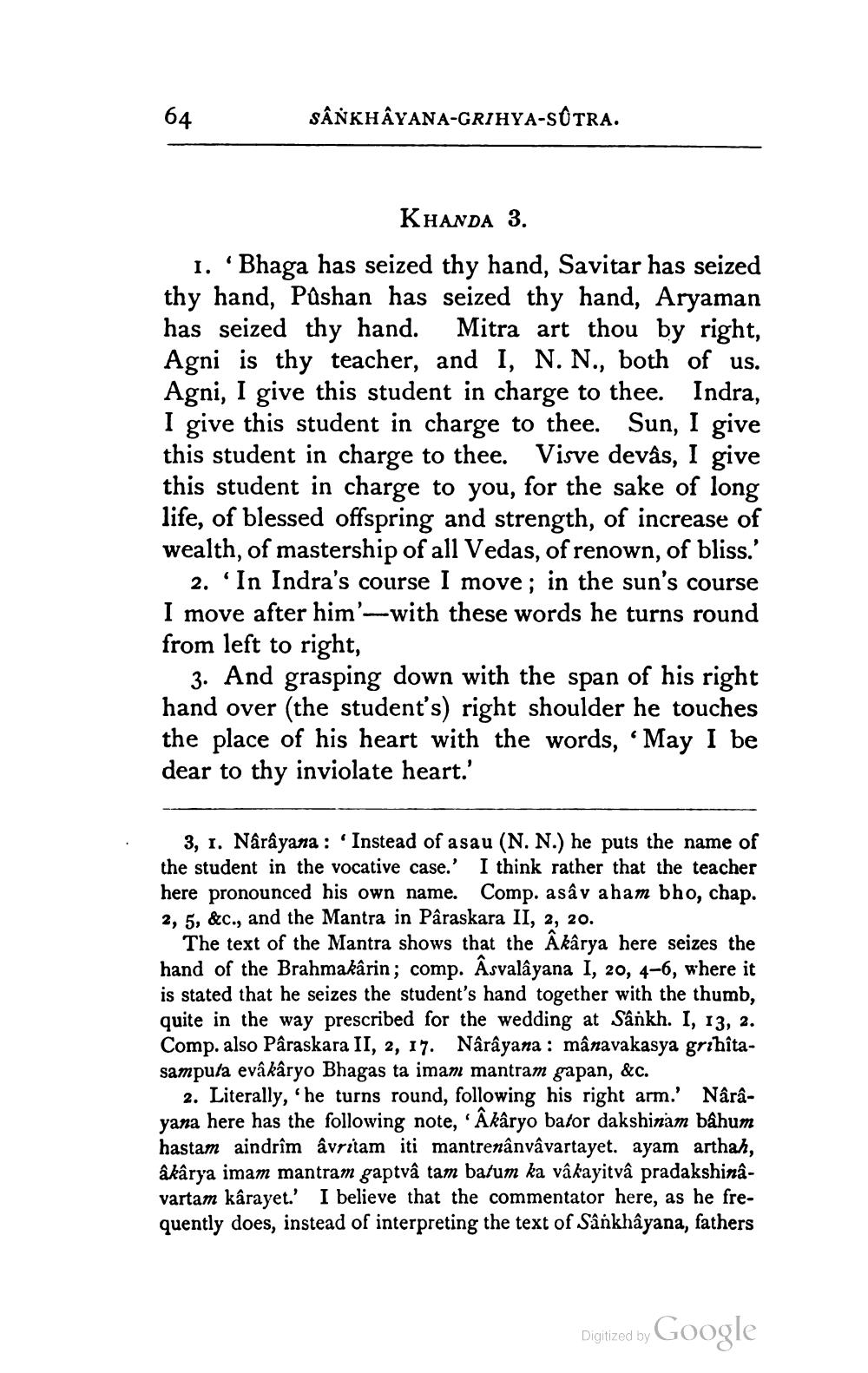________________
SÂN KHẤYANA-GRIHYA-SOTRA.
KHANDA 3. 1. 'Bhaga has seized thy hand, Savitar has seized thy hand, Pushan has seized thy hand, Aryaman has seized thy hand. Mitra art thou by right, Agni is thy teacher, and I, N. N., both of us. Agni, I give this student in charge to thee. Indra, I give this student in charge to thee. Sun, I give this student in charge to thee. Visve devâs, I give this student in charge to you, for the sake of long life, of blessed offspring and strength, of increase of wealth, of mastership of all Vedas, of renown, of bliss.'
2. 'In Indra's course I move; in the sun's course I move after him'-with these words he turns round from left to right,
3. And grasping down with the span of his right hand over (the student's) right shoulder he touches the place of his heart with the words, “May I be dear to thy inviolate heart.
3, 1. Narayana : 'Instead of asau (N. N.) he puts the name of the student in the vocative case.' I think rather that the teacher here pronounced his own name. Comp. asâv a ham bho, chap. 2, 5, &c., and the Mantra in Pâraskara II, 2, 20.
The text of the Mantra shows that the Akârya here seizes the hand of the Brahmakârin; comp. Asvalâyana I, 20, 4-6, where it is stated that he seizes the student's hand together with the thumb, quite in the way prescribed for the wedding at Sankh. I, 13, 2. Comp. also Pâraskara II, 2, 17. Nârâyana : mânavakasya grihîtasampula evâkâryo Bhagas ta iman mantram gapan, &c.
2. Literally, 'he turns round, following his right arm.' Nârâyana here has the following note, 'Akaryo bator dakshinam bahum hastam aindrîm âvritam iti mantrenânvâvartayet. ayam arthah, akarya imam mantram gaptvâ tam batum ka vâkayitva pradakshinavartam kârayet.' I believe that the commentator here, as he frequently does, instead of interpreting the text of Sânkhâyana, fathers
Digitized by Google




